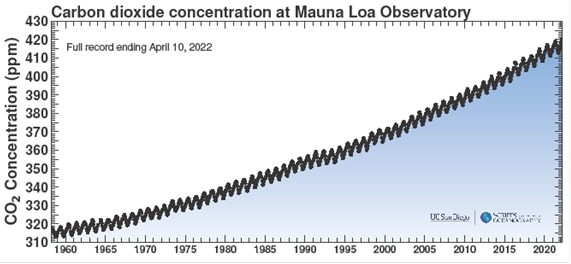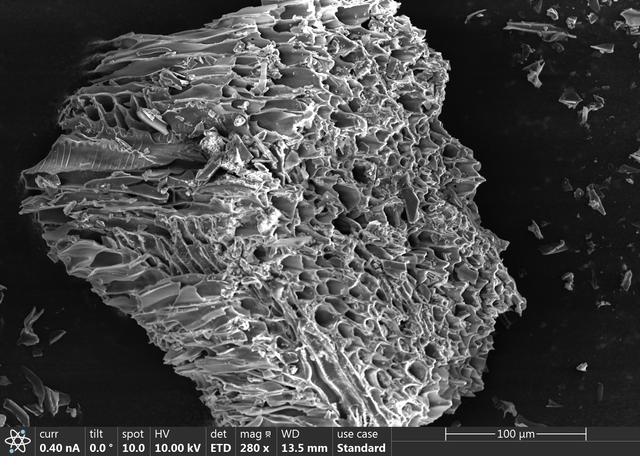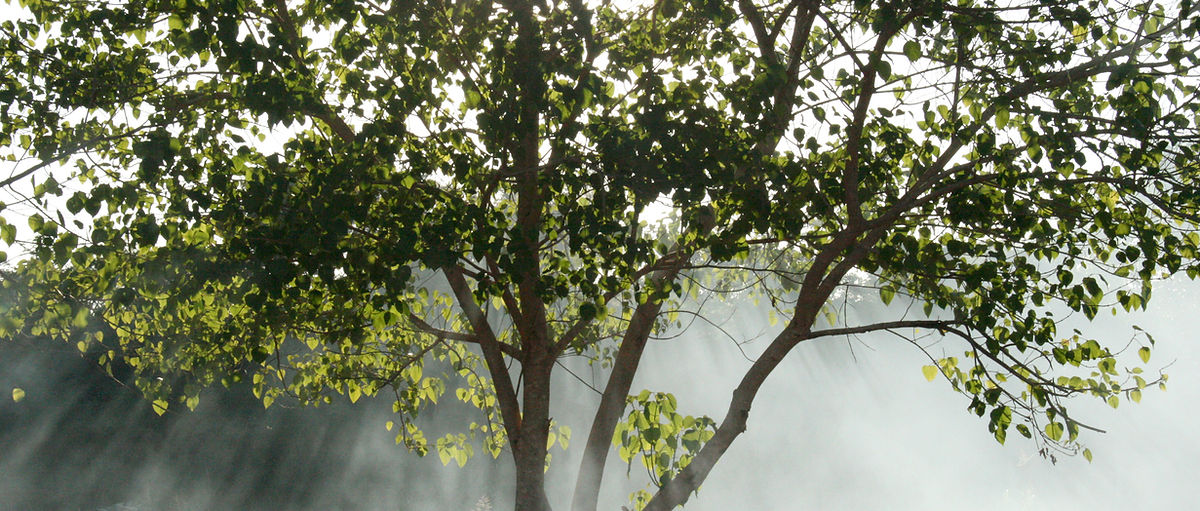Call to Action
by David Reynolds
Welcome to the website for Maccy Biochar [Macclesfield SA, Australia]. We’re hoping that you’re here to learn more about biochar and we’re hoping that you’re going to MAKE biochar in your own community. While it’s nice for us to supply biochar to people, it’s of greater value to our CO₂ burdened planet Earth that you make biochar from scrap wood and naturally available waste wood. Our planet Earth, and all living life-forms are under threat because of human release of toxic levels of Carbon dioxide in the recent past. The Keeling Curve below shows the rise in CO₂ concentration in the atmosphere over the last 50 or so years.

Making biochar is one way in which we can address this problem.
Please click on this link to see and hear an impressive TedX Talk about biochar: https://youtu.be/p0YNFn9Dloc?si=Y1SpyBTCkgDWRRX9
Let us now just check our use of language…biochar is identical to charcoal after processing. However, HOW this change is made to wood (a carbon based material) is THE most important matter to planet Earth.
Biochar is made using a process called pyrolysis – heating the wood in the absence of oxygen. Effectively, the wood is ‘cooked’ at very high temperatures (400-600C) in our kilns. When pyrolysis is carried out so as to avoid the off-gassing of methane and carbon monoxide (CO) and avoid the run-off of tarry condensate then we can claim the resulting charcoal to be environmentally sustainable – and we then call it biochar.
Most charcoal production uses a far “dirtier” process that releases a lot of methane and carbon monoxide (CO) into the atmosphere and tars into the surrounding soil.
If you want the benefits of biochar, then PLEASE use a sustainable method to produce it. Then we all win by removing CO₂ from the atmosphere, through breaking the Carbon Cycle.
Below is a talk I gave recently on this topic to a local gardening club:
The other morning I sat and enjoyed the early sunshine warming me, with my cat sitting on my lap. As I looked into, and past the garden I saw trees, shrubs – plants everywhere.
I was breathing clean, fresh air! Air that contains about 20% Oxygen. This is the gas that sustains life in every single one of my living cells, as well as the cells of every other oxygen breathing creature on this planet!
This oxygen was overwhelmingly produced by plants. The success of plants is the reason that animals and humans emerged from the primaeval slime of early Earth. Without plants there wouldn’t be enough oxygen to sustain the complex life-forms that inhabit the Earth. In other words, we would not have been created without plants emerging ahead of us, and creating an oxygen rich atmosphere on Earth.
Plants live, and die, in what is called “The Carbon Cycle”.
This is the circular process of plants taking in Carbon Dioxide, using solar energy absorbed through their green surfaces, and converting that CO₂ into carbon based cells. Carbon based cells form the basis of all living creatures on planet Earth.
Our very lives ultimately depend upon plants – more than the economy, or politics, but ultimately upon the plants making up the Carbon Cycle.
It is the largest of these plants – the trees – that dominate the land surfaces of planet Earth. Billions of tonnes of CO₂ are converted by photosynthesis and other chemical processes into carbon based cells that we call wood, leaves, twigs etc.
This Carbon Cycle is essential for the life of all organisms on this planet.
The health of ecological systems has been destabilised by the release of excessive amounts of CO₂ into the atmosphere in just my lifetime. The new ecological era, that has been dubbed the Anthropocene, has been dated from the year of my birth, 1951. I am a child of this new era of the destabilisation of Earth’s living systems.
Certainly our children and grandchildren are full members of this uncertain and turbulent era of dramatic ecological change. The most frequently used labels for this new, potentially threatening era are – Climate Change, Global Warming, Global Heating, even Global Boiling has been used.
We all have good reason to be deeply concerned at what human activities have, and are, continuing to do to adversely affect Earth’s living systems.
The members of Maccy Biochar are motivated to do something about Climate Change right NOW. In our own backyard – quite literally.
It would be easy to feel powerless in the face of systematic CO₂ pollution that is being generated by industries that virtually none of us are employed in. We use products, some indirectly in the energy used to make stuff that we buy and some we use directly – like when you cook your dinner on a gas stove, or drive your car to this meeting. But the fossil fuel industry’s success in shaping our way of working and living directly threatens the basis of life and health for every living creature – including ourselves, and everyone we love.
We’re all working toward our goal of making Macclesfield, South Australia Carbon Neutral sometime in the near future. The tool we are using to achieve this noble goal is by making biochar.
So what is BIOCHAR?
Historically, biochar is known as a component of a kind of soil called black earth (terra preta) which is found in various parts of the world – but especially in the Amazon Basin. These black, very fertile soils, are thought to have been made by people over many hundreds of years as a by-product of their gardening and cooking activities and/or as a result of forest fires and flash flooding.
The major ingredient of these black soils is a type of charcoal which we now call biochar. It is primarily composed of fixed carbon; which lasts for hundreds, possibly thousands, of years without breaking down.
As evidence of this claim – terra preta has been carbon dated to the period 450-950 BCE. Quick maths: 2,500 to 3,000 years old.
So what is special about biochar, and what does it do?
Firstly, it has a structure that consists entirely of pores (like a sea sponge but rigid instead of soft). These pores range in size from a fraction of a millimeter diameter down to micrometers and even nanometers. Some are so small that they can trap molecules of gas. The huge number of pores provides an extraordinarily large surface area, which creates niches for micro-organisms to use as a home.

Secondly, Biochar is amazingly stable. Carbon dating has demonstrated that it can be sustained in soil for thousands of years. Therefore, it is a practical way of storing CO₂ in a fixed form that actually works (i.e. sequestering)!
Carbon sequestration is a process whereby CO₂ can be retained in a form where it is unable to return to a gas and then increase the heating of Earth’s atmosphere.
The fossil fuel industry has been burning through Billions $$$ of our tax money, with the support of the major political parties, so that they might be able to justify continuing to drill for new deposits of oil, gas, and coal which when burned release astronomical amounts of CO₂ pollution. It is these ‘baked-in’ structural sources of energy that are driving the rise in global levels of CO₂.
However, we can achieve what the Coal, Oil & Gas industries have failed at scale to achieve – by turning plant based materials into biochar.
There are two ways to ‘scale’ the production of biochar. One way is to use industrial-scale pyrolysis, which we, as individuals obviously aren’t involved in (but companies are, and will accomplish this). The second way of scaling production is by many, many households making their own biochar within their own properties.
If millions (billions?) of us make biochar with waste wood that is close at hand, then we shall (collectively) make a global impact.
Biochar cannot be the answer to all of the side-effects of burning fossil fuels, but it already is, and will be, an important part of the answer to a problem that we humans have created.
By making biochar we fix the majority of the carbon that a tree made and thereby lock up that carbon and remove that amount of CO₂ from the atmosphere.
Making biochar interrupts the Carbon Cycle; removing CO₂ from the atmosphere by the natural process of trees doing what trees do – growing and manufacturing carbon based growth.
It is an enormous irony that fossil fuels were created millions of years ago through the breaking of the Carbon Cycle… – but , of course, the store of that carbon was accumulated over millions, if not, billions of years. However, humanity has exploited this stored carbon in only a few human lifetimes – which is why it is so polluting and overloads the Earth’s finely balanced living systems.
Making biochar gets Carbon locked back underground in the earth – for thousands of years! And in so doing prevents that carbon from ever combining with oxygen again to form CO₂.
We make biochar and then place it into Earth’s living systems where it remains locked away – in terms of a human lifetime – virtually forever (1000- 3000 years)
HOW IS BIOCHAR MADE?
Biochar is made by heating plant material (wood and twigs, leaves etc
– which is biological carbon) in a low oxygen environment. This process is called pyrolysis.
Now pyrolysis sounds very exotic, but all it really means is that we starve the fire of oxygen so that most of the biomass only cooks instead of burning to ash. We make a fire in an open-top container where air cannot enter from below, so while the fire gets hot it is kept as smoke-free as possible – because smoke from a fire is actually a cloud of gases – including CO₂, CO and methane – and we don’t want to add these to the Climate Change problem.
However, you can also make biochar in your own backyard – in a small hollow in the ground – no equipment needed – except for a spade to make the hole!
STEP 1: You start off by burning a small amount of wood in the bottom of the hole and add more dry wood slowly. In that way, you avoid releasing smoke or methane from the fire.
Basically you are making a fire without smoke.
If you see a little gas (smoke) being emitted, then apply a couple of handfuls of light flammable material to the fire to flare-off these gases.
STEP 2: You continue to add wood until the vessel is full, and the wood has been covered in fire to the point when ash begins to form on the surface of individual pieces.
STEP 3: You minimise any ash by quenching the burning wood before it becomes ash – i.e. you cover the fire in water.
STEP 4: When the water has cooled the biochar, then you drain the water and remove the biochar from the hole in the ground and bag it, ready to add to your garden.
STEP 5: ENHANCE your biochar WITH WORM TEA / SEASOL / CHICKEN, OR ANIMAL MANURES. Otherwise the raw biochar will initially suck up water and the nutrients you want for your plants. In time your biochar will become full of water and nutrients and microbes all of which will then be made available to the roots of nearby plants.
The soil interface between plants and the soil is like an external gut for your precious garden plants. Here is a biota – a seething mixture of bacteria and fungi co-existing both with each other and your plants.
Experiments have indicated that the best balance between bacteria and fungi for plants is about 50/50. This biota will have a profile that basically suits each specific plant, so if you have a rose bush next to a geranium they shall each have their own biota “halo” around and on and within the surface of their roots.
And, like the human gut, this biota makes nutrients and minerals available to its host, in this case your prize rose bush, so that as the biota thrives, so does your rose.
Biochar has some unique properties. The surface area of a cubic centimetre of biochar is very large. Actually, ‘very large’ is a gross understatement – its 300 sq.m per cubic centimetre of biochar.
– So a piece that’s just under half an inch square has a surface area the size of a football Oval.
As gardeners, you would relish the chance to grow your favourite plants in an area of that size.
These vast surfaces in biochar become inhabited by fungi and bacteria that also happen to create improved vitality in the plants living close by. This biota – fungi and bacteria – are absolutely essential for healthy plant growth. I shall return to this issue a little later.
This is what is called a symbiotic relationship.
Symbiotic relationships are nature’s WIN-WIN strategy.
However, when we put biochar into the soil this WIN-WIN is multiplied and becomes WIN-WIN, WIN-WIN (FOUR WINS).
Advantages of Biochar
You will recall that I mentioned the enormous surface area of every piece of biochar. 300sq.m for every cubic centimetre.
That surface area becomes the home for fungi and bacteria – a home for them that is essential for your plant’s health. But also, that huge surface area can do something else that’s very significant – absorb and hold water.
Biochar can store up to five times it’s own weight in water and dissolved nutrients. That’s an enormous positive load of goodies for your plants.
So when you put a handful of biochar into the hole you dug for your latest shrub, you are increasing the water-holding capacity of your soil, as well as sequestering carbon from the atmosphere for potentially thousands of years.
Two WINS –
improved water holding capacity, and
CO2 sequestration.
But because you understand that your new plants need a healthy thriving biomass around their roots in order to maximise the plant’s growth you will have enhanced the biochar to increase the health-giving capacity of your soil.
Inoculating the biochar with bacteria and fungi before it goes into your garden speeds-up the process of colonising the biochar with fungi and bacteria.
Enhanced biochar accelerates the growth and health of your garden plants.
Research indicates that the more diverse the biota in your soil, along with greater diversity of plants in your garden adds up to plants that are healthier – with stronger growth and they’re less likely to acquire disease through those stronger symbiotic relationships under the soil.
Plants work together with the biota to ensure that each other gets what they need for good health in the whole living system.
So now you have your WIN-WIN, WIN-WIN
Your 4 WINS:
IN SUMMARY:
1. Higher levels of retained soil moisture
2. Soil bacteria and fungi in larger numbers
3. An enhanced environment for the health of your plants, and
4. Carbon sequestration to offset CO₂ pollution.
SO HERE IS A STATEMENT TO PONDER – and really
“MESS WITH YOUR MIND”:
With Biochar we break the existing, natural Carbon cycle and set-up a VIRTUOUS CIRCLE that deals with Climate Change AND
Makes soils richer and more productive in the one action.
This is why there’s so much excitement around the world about biochar. It can be a significant part of the way humans can escape the effects of our pollution of our only home planet.
START YOUR OWN BIOCHAR MAKING GROUP:
We have a group of people in Macclesfield SA that co-operate to make biochar by pyrolysis. We have made a special vessel that is like an inverted cone, with the only access for air/oxygen from above the burning fire.
You may decide to start a group to make biochar together, pooling your resources to make or buy a special vessel similar to the one we use.
DETAILS OF BIOCHAR KILN
Please use the internet to look up BIOCHAR. Go to:
BIOCHAR in European Union & USA
Royal Horticultural Society website
Intergovernmental Panel on Climate Change report 2018
EU – currently offsetting 15% of their total CO₂ emissions – plan go to 100% in 15 years.
USA – in 2020 the market for biochar was US$141m, projected to grow to US$433 by 2028.
SA Parliamentary Inquiry into biochar in SA
We use dropped limbs of trees, waste wood – vines pulled, orchard discards, fruit tree prunings…Read our submission here.
You and I can achieve what the Coal, Oil & Gas industries have failed at scale to achieve.
We can achieve scale with biochar when we have good people like yourselves making biochar, and encouraging others to make and use biochar.

Leave a Reply